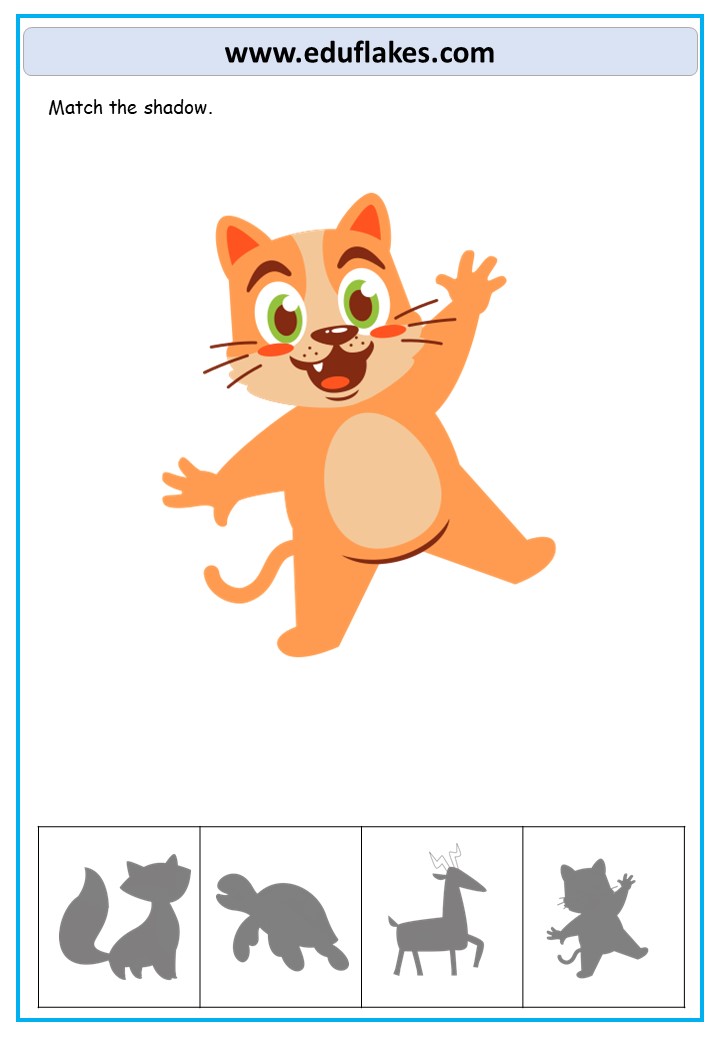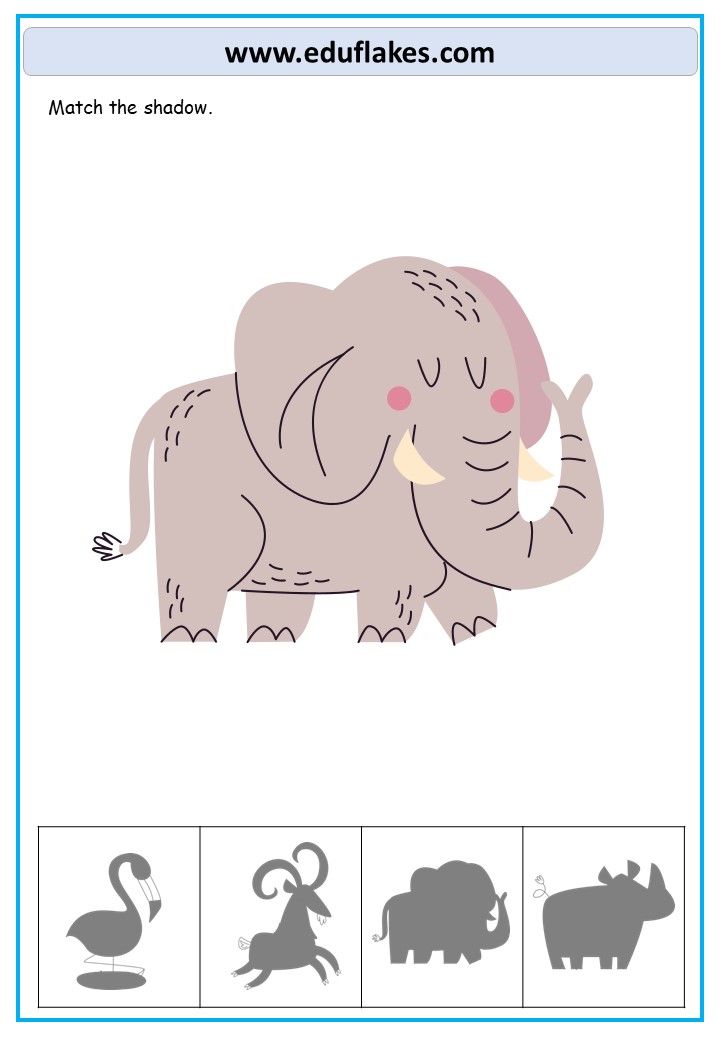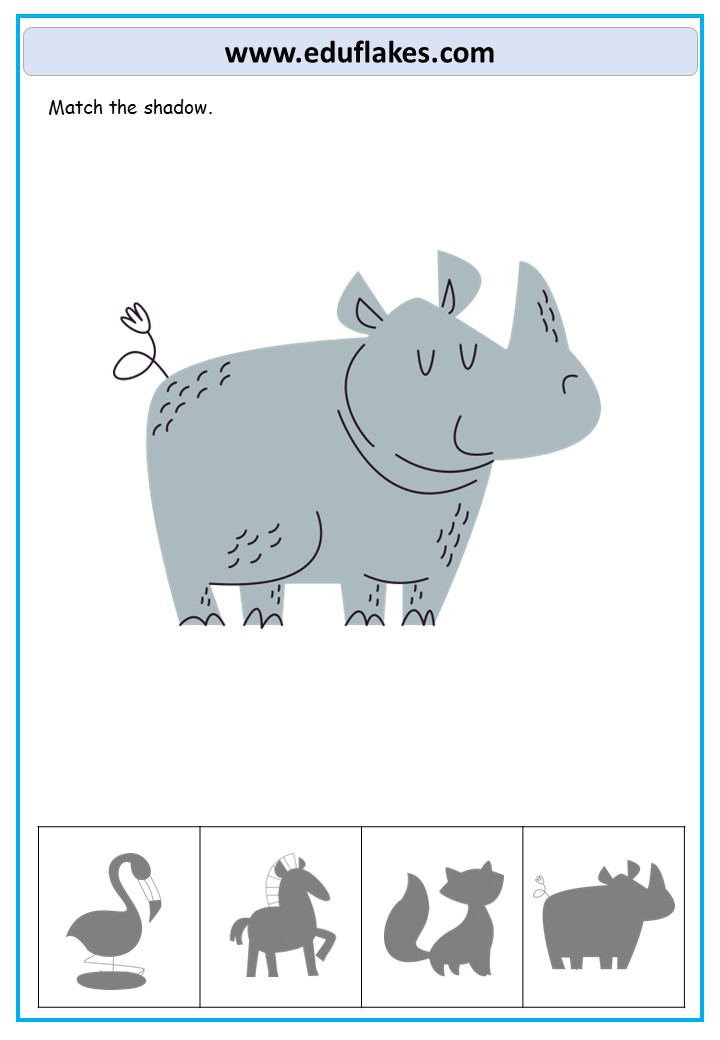Kindergarten Shadow Matching Activity Workbook
Matching shadows activity is important for kindergarten children for a variety of reasons:
- Cognitive Development: Matching shadows requires children to use their critical thinking and problem-solving skills, which helps to promote cognitive development.
- Visual Perception: The activity helps to develop visual perception skills in children, which is essential for recognizing shapes, patterns, and objects in the world around them.
- Hand-eye Coordination: Children must use hand-eye coordination to match the shadows correctly, which helps to develop their fine motor skills.
- Creativity and Imagination: The activity encourages children to use their creativity and imagination by thinking about the different shapes and objects that create shadows.
- Scientific Exploration: The activity provides an opportunity for children to explore the scientific concept of light and shadow, and how they are formed.
- Social and Emotional Development: The activity can be done with peers or with a teacher, which helps to promote social and emotional development through collaboration, communication, and sharing.
















